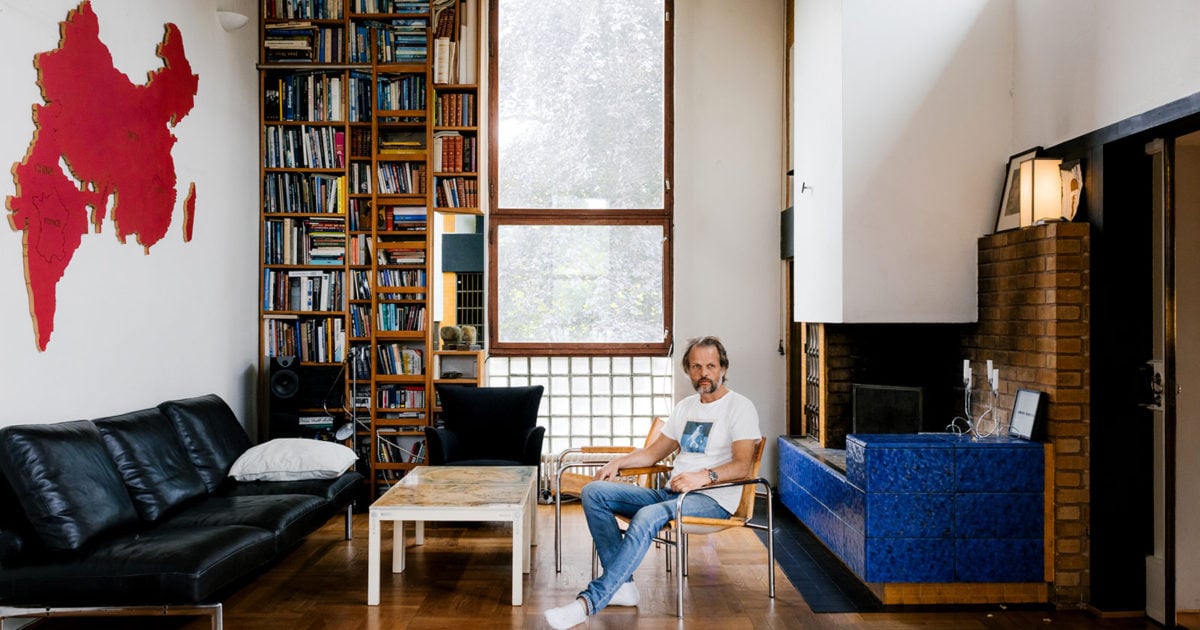
Erling Kagge is a Norwegian art collector, explorer, mountaineer, publisher, and lawyer. He gained fame for being the first person to walk to the South Pole alone, and he has also climbed Mount Everest. Today, he runs the publishing company Kagge Forlag, which he founded.
One of his most recent releases is the book A Poor Collector’s Guide to Buying Great Art, in which Kagge narrates how he built his impressive art collection—which includes works by Wolfgang Tillmans, Raymond Pettibon, Richard Prince, Tauba Auerbach, and Urs Fischer—despite having a limited budget.
Kagge’s book offers advice through 24 tips, of which we have distilled the 10 most useful pearls of wisdom for the burgeoning collector with limited resources.
Wolfgang Tillmans (2004) Venus Transit, Second Contact
Photo: Courtesy of the artist, Neugerriemschneider, Berlin and Galerie Buchholz, Berlin/Cologne
1. Be obsessed
Kagge says that, to get the best value on a tight budget, you must have an obsessive drive to research, source, and capture the objet of your desire. He cites the famous art dealer Lord Duveen, who—standing in front of JMW Turner’s Bridge and Tower—famously proclaimed: “If I owned that picture, I should want nothing else in the world.”
According to Kagge, this is how one should approach every acquisition.
Ann Cathrin November Høibo, Untitled (2014)
Photo: Vegard Kleven Courtesy of STANDARD (OSLO)
2. Accept that there are no rules, only deals
The art market is very different from conventional markets because there is little regulation. Practices such as insider trading, price manipulation, and cartels are commonplace. Kagge advises to be aware of these practices.
3. Cultivate the perfect eyes, nose, and ears
Sometimes it can be difficult to differentiate between bad and great art. Kagge recommends to not only train your eyes, but also your nose, and ears, meaning that you must listen to what people around you are saying.
Kagge recalls an encounter with the legendary art dealer Irving Blum, who told him that whenever he heard an artist’s name mentioned by two or more people whose opinion he respected, he went to see the artist.
Klara Lidén, (from left to right) Self Portrait with Keys to the City (2005) and Untitled (Trashcan) (2013)
Photo: Christian Øen via Astrup Fearnley Museum
4. Hang out with people in the art world
To get the most bang for your buck, it can be very helpful to cultivate relationships with the movers and shakers of the art world. Personal friendships with advisors, artists, curators, collectors, dealers, and gallerists offer invaluable perspectives on contemporary art, and insider information that others may not have access to.
5. The gallerist holds the key
Galleries have a critical role in introducing artists to collectors. Kagge says that it is crucial to get to know several good gallerists who represent the artists you are trying to collect.
He also mentions that it helps to buy regularly from a handful of galleries, as they will repay your loyalty by giving you their best works or offering discounts.
Olafur Eliasson, Yellow Door Semicircle (2008)
Photo: Christian Øen via Astrup Fearnley Museum
6. Don’t expect to make money
Collecting art with the intention of making a buck is the biggest mistake a collector can make. Kagge points out that art was not made to be an object of speculation. The real value of buying and collecting art comes from the enjoyment of having a great piece in your home.
7. Be an early bird
Being the first person the see the art (ideally before the opening) gives you the best chance of accessing the best works.
The same goes for buying works from artists early in their careers. Today, an artist’s career and price trajectory can be steep and Kagge admits that he likes to buy an artist early because he may not be able to afford the works later.
Franz West, Untitled (Rolls Royce Adaptives) (2007)
Photo: Vegard Kleven
8. Accept that the best price might not be the lowest price
Often, collectors have to pay top prices to get the best pieces. It’s better to buy one fantastic artwork than to buy five or ten mediocre ones. Don’t be afraid to invest in the right piece.
9. Buy opportunistically at auction
Auctions offer fantastic opportunities to buy high quality works from mid-career artists who may not be highly touted or who may have fallen behind. Just don’t forget that auction house premiums can be as high as 25 percent.
Works by Tauba Auerbach
Photo: Christian Øen via Astrup Fearnley Museum
10. Be nice about money
Its important not to be discouraged from pursuing an artwork that you can’t afford. Many galleries are prepared to negotiate the terms of a sale, and payment of sums in installments is common practice.
However, Kagge advises to pay as quickly as possible if you happen to have the money. Many collectors make a habit of paying late, so paying quickly and on time will put you in the gallerists’ good books.
Erling Kagge’s A Poor Collector’s Guide to Buying Great Art (2015)
Photo: highsonobiety.com
A Poor Collector’s Guide to Buying Great Art has been published by Earling Kagge.
“Love Story – Works From Erling Kagge’s Collection” is on view at the Astrup Fearnley Museet, Oslo, Norway, from May 22-September 27, 2015.
For more art world-related tips, see:
12 Must-Read Tips for a Successful Career in the Art World
10 Tips for Aspiring Curators From Adrian George